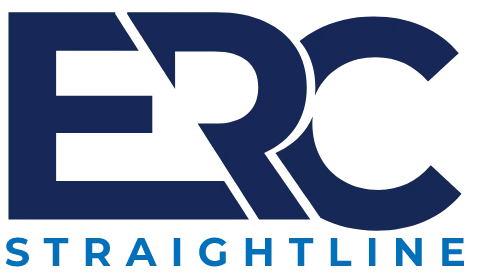
Maximize Your Benefits with the Employee Retention Credit (ERC) Expertise
Find Out in Just 1 Minute if Your Business Qualifies for Support after Covid-19 Impacts.
Why Choose us?
The ERC underwent several changes and has many technical details, including how to determine qualified wages, which employees are eligible, and more. Your business’ specific case might require more intensive review and analysis. The program is complex and might leave you with many unanswered questions.
We can help make sense of it all. Our dedicated experts will guide you and outline the steps you need to take so you can maximize the claim for your business.
About The
ERC Program
What is the Employee Retention Credit (ERC)?
ERC is a stimulus program designed to help those businesses that were able to retain their employees during the Covid-19 pandemic.
Established by the CARES Act, it is a refundable tax credit – that you can claim for your business. The ERC is available to both small and mid-sized businesses. It is based on qualified wages and healthcare paid to employees.
Up to $26,000 per employee
No limit on funding
ERC is a refundable tax credit
Available for 2020 and the first 3 quarters of 2021
How much money can you get back?
You can claim up to $5,000 per employee for 2020. For 2021, the credit can be up to $7,000 per employee per quarter.
$100,000
*Average full-time W-2 employee count in 2020
*Average full-time W-2 employee count in 2021
*This is an estimate only based on the employee counts entered and does not represent a guarantee of the credit amount you will receive, or that you will qualify for the program.
Frequently Asked Questions
Have questions? We are here to help
Will I have to repay the ERC?
No, unlike a loan, this credit does not have to be repaid. If audited the IRS has the right to claw back the funds.
Are there any restrictions on how I can spend my ERC refund?
Unlike a loan or other form of business funding, the Employee Retention Credit (ERC) is a fully refundable tax credit that does not come with limitations on how it can be spent. As a result, businesses that qualify for the ERC can choose to spend their refund in any way they see fit.
How much ERC can I claim per eligible employee?
The Employee Retention Credit (ERC) allows employers to claim a maximum credit amount of $26,000 per employee. For the tax year 2020, employers can claim up to 50% of qualified wages per employee, with a maximum credit of $5,000 per employee for the entire year. In contrast, for the tax year 2021, employers can claim up to 70% of qualified wages per employee per quarter, with a maximum credit of $21,000 per employee for the year. However, it’s worth noting that most businesses will only be eligible to claim qualified wages for Q1 through Q3 of 2021.
Can my business qualify with a decline in gross receipts?
“Yes, your business qualifies for the ERC with a drop in revenue if it had a significant decline in gross receipts. The meaning of a significant decline in gross receipts differs between 2020 and 2021.
In 2020, a significant decline is defined as a 50% decrease compared to the same calendar quarter in 2019.
In 2021, a significant decline is defined as a 20% decrease compared to the same calendar quarter in 2019.”
Do we still qualify if we already took the PPP?
Yes. Under the Consolidated Appropriations Act, businesses can now qualify for the ERC even if they already received a PPP loan. Note, though, that the ERC will only apply to wages not used for the PPP.
Do we still qualify if we remained open during the pandemic?
To qualify, your business must have been negatively impacted in either of the following ways:
A government authority required partial or full shutdown of your business during 2020 or 2021. This includes your operations being limited by commerce, inability to travel or restrictions of group meetings.
Gross receipt reduction criteria is different for 2020 and 2021, but is measured against the current quarter as compared to 2019 pre-COVID amounts.
A business can be eligible for one quarter and not another.
Initially, under the CARES Act of 2020, businesses were not able to qualify for the ERC if they had already received a Paycheck Protection Program (PPP) loan. With new legislation in 2021, employers are now eligible for both programs.
What time period does the ERC program cover?
The ERC program covers eligible wages paid to W-2 employees from March 13th, 2020 through September 30th, 2021 for eligible employers.
What is the Employee Retention Credit?
The employee retention credit (ERC) is a refundable payroll tax credit that was put into law through the Coronavirus Aid, Relief, and Economic Security (CARES) Act. The ERC is for businesses that continued to pay employees while shut down due to COVID -19 restrictions or had significant decline in gross receipts from March 13, 2020 to September 30, 2021. This credit offsets employment taxes paid by an employer to offer relief from the COVID-19 pandemic.
When does the ERC program end?
The deadline for claiming the ERC for eligible quarters in 2020 is April 15, 2024.
The deadline for claiming the ERC for eligible quarters in 2021 is April 15, 2025.
How do I receive my ERC refund?
The ERC will be issued in the form of a cash refund that you will receive in the mail from the IRS. The IRS will send checks based on qualifying quarters.
You may receive several checks (e.g., one check per quarter). The IRS reserves the right to use funds as a credit towards back taxes.
Can I apply for ERC if I'm self-employed?
No. Only W-2 employee wages can be claimed, and you cannot claim your own wages as a majority owner even if you are on a W-2 wage.
Submit To Determine Your ERC Eligibility!